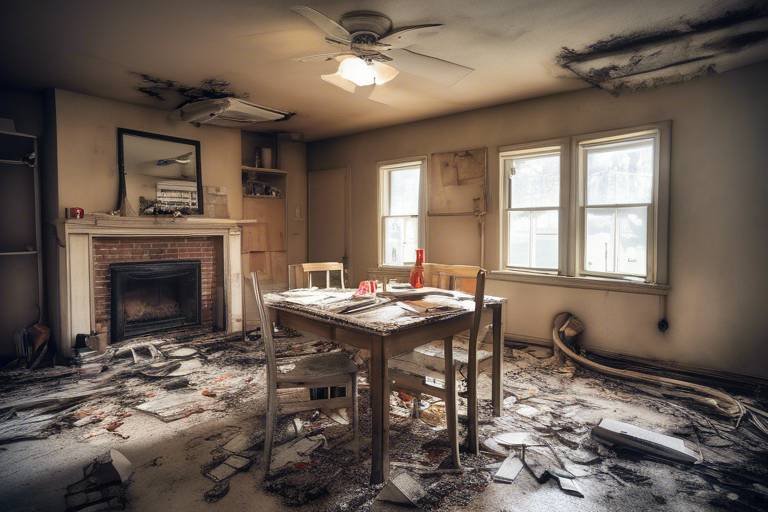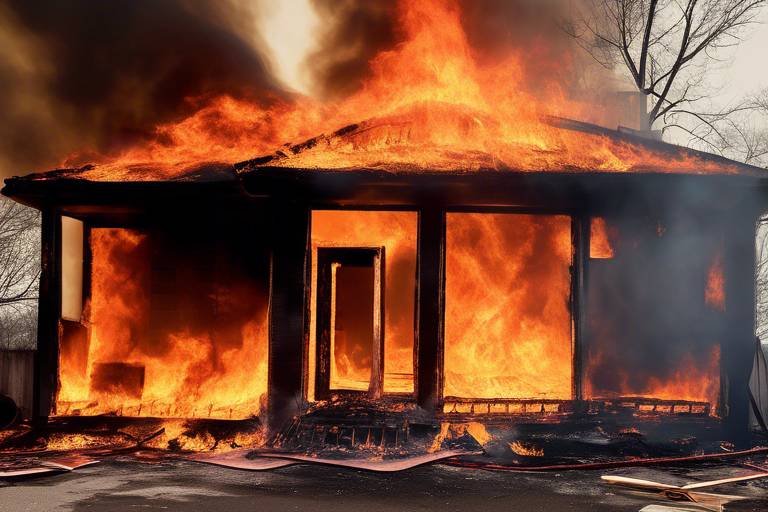Earthquake-Proofing Your Home – How to Do It Right
When it comes to safeguarding your home against the unpredictable force of nature that is an earthquake, preparation is key. Earthquakes can strike without warning, leaving devastation in their wake. However, by taking proactive steps to earthquake-proof your home, you can significantly enhance your safety and minimize potential damage. This article delves into effective strategies and techniques that will not only fortify your living space but also provide peace of mind for you and your loved ones.
Before diving into the nitty-gritty of home modifications, it's essential to understand the risks associated with earthquakes. Earthquakes can vary in intensity and type, ranging from minor tremors that barely register to catastrophic quakes that can cause widespread destruction. By assessing your location's vulnerability, you can better prepare for the specific risks that may arise. For instance, if you live in a seismic zone, the need for preparedness becomes even more critical. Think of it like preparing for a storm; the better prepared you are, the less likely you are to suffer significant losses.
One of the most effective ways to enhance your home's earthquake resilience is through structural reinforcements. These modifications can significantly improve the stability of your home during seismic events. Key techniques include bolting, bracing, and retrofitting. Bolting involves securing your home to its foundation, while bracing strengthens walls to withstand lateral forces. Retrofitting older homes with modern safety features can make a world of difference in their ability to endure an earthquake.
A strong foundation is the backbone of any earthquake-resistant home. Upgrading your foundation can involve methods such as underpinning, which adds depth and stability, or installing steel reinforcements. These enhancements provide the necessary support to keep your home grounded during seismic activity. Imagine your home as a tree; a strong root system is vital for it to withstand strong winds and storms. Similarly, a robust foundation allows your home to weather the shakes of an earthquake.
The soil beneath your home plays a pivotal role in its structural integrity. If the ground is unstable, even the sturdiest building can suffer. Implementing soil stabilization techniques can significantly improve your home's resilience against seismic forces. Methods like compaction grouting or using geogrids can help solidify the ground beneath your foundation, providing a more stable base. Think of it as giving your home a solid pair of shoes to stand on during a rocky journey.
When it comes to building or renovating your home, selecting appropriate materials is crucial for earthquake resistance. Materials such as reinforced concrete, steel, and wood are known for their durability and flexibility, essential for absorbing shock. Using these materials can help your home bend rather than break during an earthquake. Just as a well-made car can absorb the impact of a collision, the right building materials can help your home withstand the tremors of the earth.
If you live in an older home, it may not have the modern safety features necessary to withstand an earthquake. Retrofitting is an effective strategy to upgrade these structures, ensuring they meet current safety standards. This process can involve reinforcing walls, adding shear panels, and securing the roof to the walls. By investing in retrofitting, you're not just protecting your property; you're also safeguarding your family and their future.
Having a solid emergency plan is vital in the event of an earthquake. It's not just about making your home structurally sound; you also need to prepare yourself and your family for the unexpected. Creating a comprehensive emergency preparedness plan involves outlining evacuation routes, communication strategies, and identifying safe spots within your home. Think of it as a roadmap for navigating a storm; knowing where to go and what to do can make all the difference when disaster strikes.
Effective communication during an emergency can save lives. Establishing a family communication plan ensures that everyone knows their role and where to meet in case of an earthquake. This plan should include contact information for each family member, as well as a designated meeting place outside the home. Just like a team in a game, everyone needs to know their position and what to do when the whistle blows.
Preparing for the unexpected means assembling emergency kits filled with essential supplies. These kits should include items like water, non-perishable food, flashlights, batteries, and first-aid supplies. Having these items on hand ensures that your family is ready for any situation following an earthquake. Think of it as having a safety net; it’s better to have it and not need it than to need it and not have it!
Understanding insurance options is crucial for earthquake preparedness. Not all insurance policies cover earthquake damage, so it's important to evaluate your current policy and consider additional coverage if necessary. This section will discuss different types of coverage available and what to consider when selecting a policy. Just like you wouldn't drive a car without insurance, you shouldn't leave your home vulnerable to the financial repercussions of an earthquake.
When evaluating your insurance policies, look for specific clauses related to earthquake damage. Many standard homeowners' policies may not cover this type of damage, so you may need to purchase a separate earthquake insurance policy. Assessing your needs and understanding your coverage options can provide peace of mind, knowing that your home is protected.
Preparing for potential repairs is an important aspect of earthquake readiness. Budgeting for unexpected home repairs after an earthquake can help you avoid financial strain. Consider setting aside an emergency fund specifically for this purpose, ensuring that you're ready for whatever comes your way. It's like having a rainy-day fund, but for when the ground shakes!
Q: What are the best materials for earthquake-proofing a home?
A: Materials such as reinforced concrete, steel, and flexible wood are excellent choices for earthquake-resistant construction.
Q: How can I assess my home's earthquake risk?
A: You can assess your home's risk by researching local seismic activity, understanding your soil type, and consulting with a structural engineer.
Q: Is earthquake insurance necessary?
A: If you live in a seismic zone, earthquake insurance can provide crucial financial protection against potential damage.
Q: What should I include in my emergency kit?
A: Your emergency kit should include water, food, first-aid supplies, flashlights, batteries, and any necessary medications.
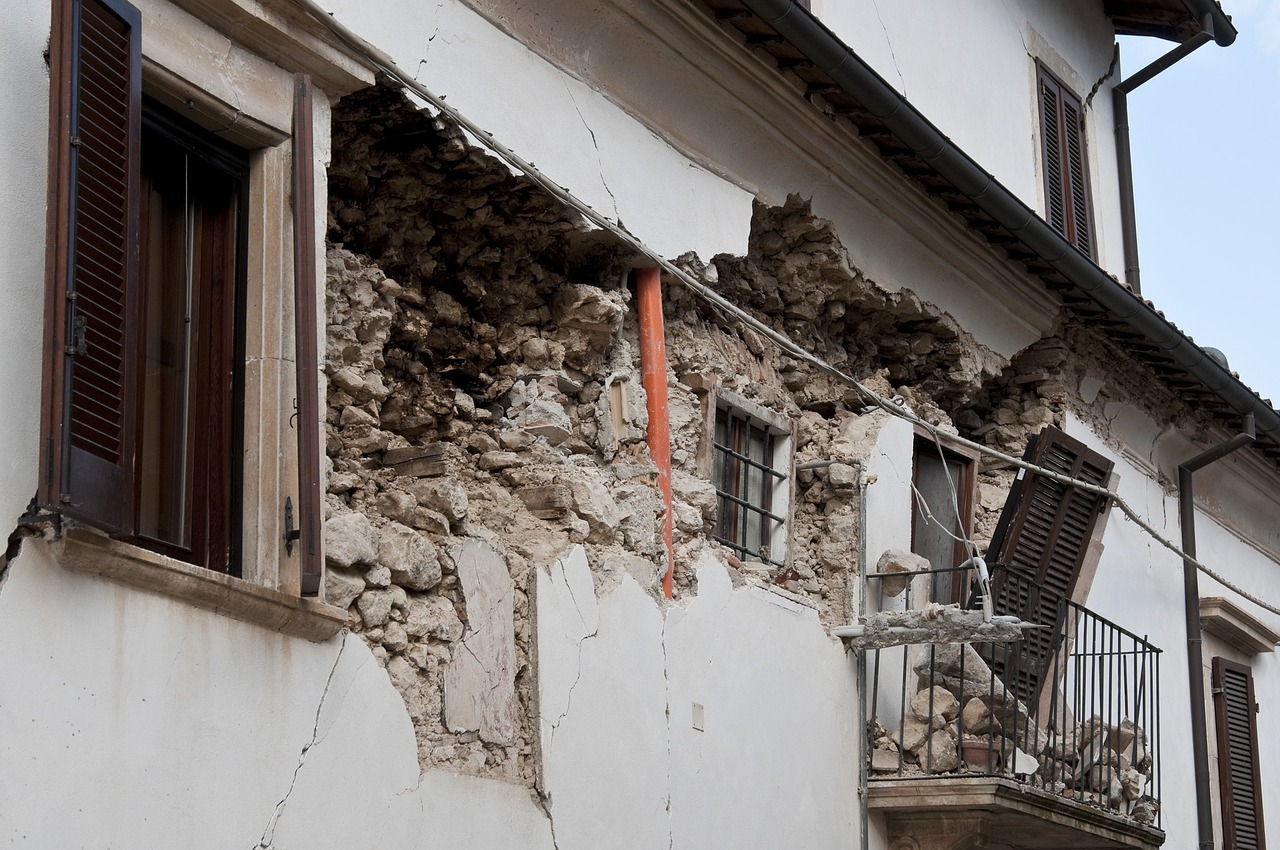
Understanding Earthquake Risks
When it comes to earthquakes, understanding the risks involved is crucial for every homeowner. Earthquakes are unpredictable natural disasters that can strike without warning, causing significant damage to properties and posing serious threats to safety. But what exactly are these risks, and how can you prepare for them? Let’s dive into the different types of earthquakes and the specific dangers they present to homes.
Earthquakes can be classified into several categories based on their origin and intensity. For instance, tectonic earthquakes occur due to the movement of Earth's tectonic plates, while volcanic earthquakes are triggered by volcanic activity. Each type carries unique risks. Tectonic earthquakes are usually more powerful and can lead to severe ground shaking, which can compromise the structural integrity of buildings. On the other hand, volcanic earthquakes may not be as intense but can be accompanied by other hazards such as ashfall and lava flows.
To assess your home's vulnerability, consider the following factors:
- Location: Are you in a seismically active area? Regions near fault lines are at higher risk.
- Soil Type: Certain soil types, like loose or sandy soils, can amplify shaking.
- Building Age: Older homes may not be built to withstand modern seismic standards.
Understanding these risks is just the first step. It's essential to recognize the importance of preparedness. Imagine being in your living room when the ground starts shaking. Do you know what to do? Having a plan in place can mean the difference between safety and disaster. By assessing your location's risks and preparing accordingly, you can significantly reduce the potential for damage and injury.
Moreover, the impact of an earthquake extends beyond immediate physical damage. The emotional and psychological toll can be profound. Families may face displacement, loss of belongings, and the anxiety of aftershocks. Therefore, being proactive about earthquake preparedness not only protects your property but also safeguards your mental well-being.
In summary, understanding earthquake risks involves recognizing the types of earthquakes, assessing your home's vulnerability, and preparing for potential disasters. By taking these steps, you can create a safer living environment for you and your loved ones. Remember, preparedness is not just about protecting your physical space; it's about ensuring peace of mind in the face of uncertainty.
Here are some common questions regarding earthquake risks and preparedness:
- What should I do during an earthquake? Drop, cover, and hold on. Protect your head and neck, and stay indoors if you are inside.
- How can I find out if I'm in a high-risk area? Check with local geological surveys or use online resources that provide seismic hazard maps.
- Is earthquake insurance necessary? If you live in a high-risk area, it's advisable to consider earthquake insurance to cover potential damages.
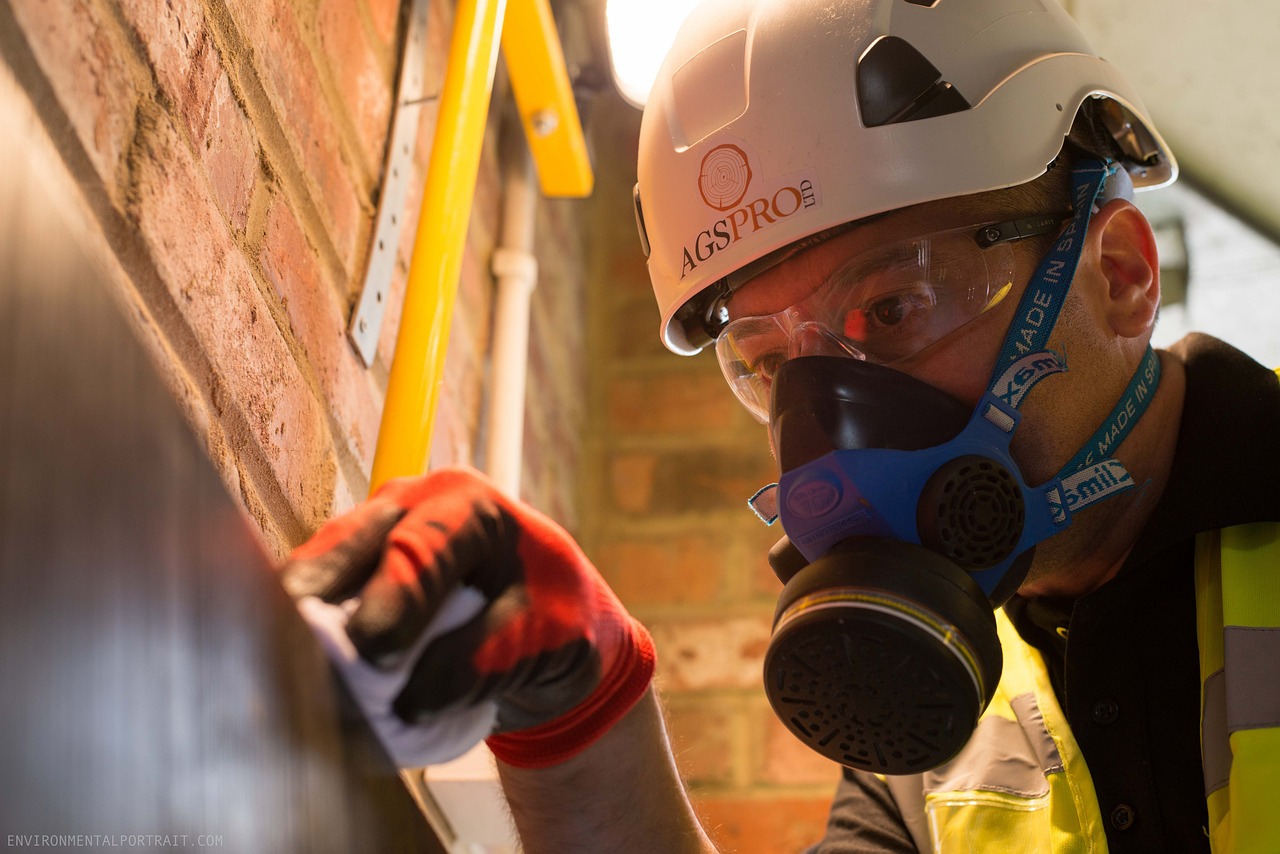
Structural Reinforcements
When it comes to safeguarding your home against the unpredictable forces of nature, play a pivotal role. Think of your house as a fortress; if the walls and foundation are weak, even the mightiest castle can crumble. The goal here is to enhance your home's resilience during an earthquake, and there are several effective strategies to consider. By implementing these techniques, you can significantly reduce the risk of damage and ensure a safer living environment for you and your loved ones.
One of the most effective ways to strengthen your home is through bolting, which involves securing the house to its foundation. This technique is especially crucial for homes built on raised foundations, as it prevents the structure from shifting during seismic activity. Additionally, bracing is another key method, where diagonal supports are added to walls to provide extra stability. This is like adding a safety net; it keeps the walls from buckling under pressure.
Retrofitting is also essential for older homes that may not have been built with modern seismic standards in mind. By reinforcing walls and adding cross-bracing, you can significantly improve your home's ability to withstand shaking. This process not only enhances safety but can also increase your property value as it meets current building codes.
The foundation is the bedrock of your home—without a strong base, everything above it is at risk. Upgrading your foundation through methods like underpinning can provide the necessary support to withstand seismic forces. Underpinning involves extending the foundation depth or breadth to improve stability. Additionally, installing steel reinforcements can add crucial support, acting like the skeleton of your home that helps it stand firm against the forces of nature.
Did you know that the soil beneath your home can dramatically impact its earthquake resistance? Soil stabilization techniques can enhance the ground's ability to support your structure. Methods such as grouting or using geotextiles can help solidify loose or unstable soil, creating a more secure foundation. This is akin to giving your home a solid footing on a rocky cliff—ensuring it stays put during the tremors.
Lastly, the materials you choose for construction or reinforcement can make a world of difference. Opting for dynamically resilient materials—those that can absorb shock and flex without breaking—can enhance your home's earthquake resistance. For example, using reinforced concrete or steel frames can provide the necessary durability while allowing for some movement during an earthquake. Think of these materials as the protective gear for your home, ready to absorb the impact when the ground shakes.
In summary, investing in structural reinforcements is not just about compliance with building codes; it's about ensuring the safety of your family and the longevity of your home. By bolting, bracing, retrofitting, upgrading foundations, stabilizing soil, and choosing the right materials, you're taking proactive steps to protect your sanctuary from the unpredictable forces of nature.
Q: What is the best way to begin earthquake-proofing my home?
A: Start by assessing your home's current structural integrity and identifying areas that need reinforcement. Consulting with a structural engineer can provide valuable insights.
Q: How often should I inspect my home for earthquake readiness?
A: It's advisable to conduct a thorough inspection every few years, especially if you live in a high-risk area. Regular maintenance can help identify potential issues before they become serious.
Q: Are there any grants or financial assistance programs for retrofitting homes?
A: Yes, many local governments and organizations offer financial assistance for homeowners looking to retrofit their properties for earthquake safety. Check with your local building authority for available programs.

Foundation Upgrades
When it comes to earthquake-proofing your home, the foundation is your first line of defense. Think of it as the bedrock of your safety; if it’s weak, everything built on top is at risk. Upgrading your foundation is not just a precaution; it’s a necessity in earthquake-prone areas. One of the most effective methods to enhance your foundation's resilience is through underpinning. This technique involves strengthening the existing foundation by extending it deeper into more stable soil. It’s like giving your house a solid set of legs to stand on during a seismic event.
Another crucial upgrade is the installation of steel reinforcements. These reinforcements act like a superhero cape for your foundation, providing additional support and flexibility. Imagine your house during an earthquake; the ground shakes, but with steel reinforcements, your home can sway rather than crack, absorbing the shock like a pro. This flexibility is vital because rigid structures are more prone to damage when the earth starts to rumble.
Additionally, you might want to consider foundation bolting. This involves securing the house to its foundation with metal bolts, preventing it from sliding off during an earthquake. It’s akin to strapping your house down to the ground, ensuring it stays put when the earth decides to dance. While these upgrades may require an initial investment, the peace of mind they provide is invaluable. You can rest easy knowing that your home is fortified against the unpredictable forces of nature.
It’s essential to assess the specific needs of your home when planning these upgrades. Consulting with a structural engineer can provide insights tailored to your situation. They can help you identify the right combination of techniques to ensure your foundation is not just strong, but earthquake-ready. Remember, the goal is to create a home that stands firm, even when the earth shakes beneath it.
- What is underpinning? Underpinning is a method used to strengthen an existing foundation by extending its depth into more stable soil.
- How do steel reinforcements help? Steel reinforcements provide additional support and flexibility, allowing your foundation to absorb shock during an earthquake.
- Is foundation bolting necessary? Yes, foundation bolting is crucial as it secures your house to its foundation, preventing it from sliding off during seismic activity.
- Should I hire a structural engineer? Absolutely! A structural engineer can assess your home’s specific needs and recommend the best upgrades for earthquake resilience.

Soil Stabilization Techniques
When it comes to making your home earthquake-proof, one of the unsung heroes is the soil beneath your feet. You might not think about it often, but the stability of the soil directly affects the integrity of your home during seismic events. Just like a house built on a shaky foundation can crumble, a home sitting on unstable soil is at a higher risk of suffering severe damage during an earthquake. So, how do we ensure that our soil is up to the task? Let’s dive into some effective soil stabilization techniques.
First off, compaction is a fundamental technique. This involves compressing the soil to increase its density, making it less susceptible to movement during seismic activity. Think of it as packing down a pile of snow; the more you pack it, the less likely it is to shift. Techniques like mechanical compaction using heavy machinery or even hand-operated tools can significantly enhance the soil's load-bearing capacity.
Another method is the use of geotextiles. These permeable fabrics are placed within the soil to improve its mechanical properties. Imagine them as a supportive net that helps hold everything together. They can prevent soil erosion and improve drainage, which is crucial during heavy rains or after an earthquake. By allowing water to flow through while holding the soil in place, geotextiles can reduce the risk of landslides and foundation issues.
Moreover, chemical stabilization is a game-changer. This technique involves mixing soil with chemical additives like lime or cement to enhance its strength and durability. It’s akin to adding a secret ingredient to a recipe that elevates the dish to a whole new level. The chemical reactions that occur help bind soil particles together, making the ground more stable and resilient to shaking.
Lastly, drainage control is essential in preventing water from weakening the soil structure. Poor drainage can lead to saturated soil, which is a recipe for disaster during an earthquake. Installing proper drainage systems, like French drains or retaining walls, can redirect water away from your foundation, ensuring that your home remains on solid ground. A well-drained foundation is like a sturdy ship; it can weather the storm without capsizing.
In summary, stabilizing the soil beneath your home is a critical step in earthquake preparedness. By utilizing techniques like compaction, geotextiles, chemical stabilization, and effective drainage control, you can significantly enhance your home's resilience against seismic forces. Remember, a strong foundation is not just about the materials used; it's also about the ground it stands on!
- What is soil stabilization? Soil stabilization is the process of improving the physical properties of soil to enhance its strength and stability, especially in areas prone to seismic activity.
- Why is soil stabilization important for earthquake preparedness? Stabilized soil helps prevent excessive movement during an earthquake, reducing the risk of damage to your home's foundation.
- What are some common soil stabilization techniques? Common techniques include compaction, the use of geotextiles, chemical stabilization, and drainage control.
- Can I stabilize my soil myself? While some techniques can be done as DIY projects, it's often best to consult with a professional for effective and safe soil stabilization.
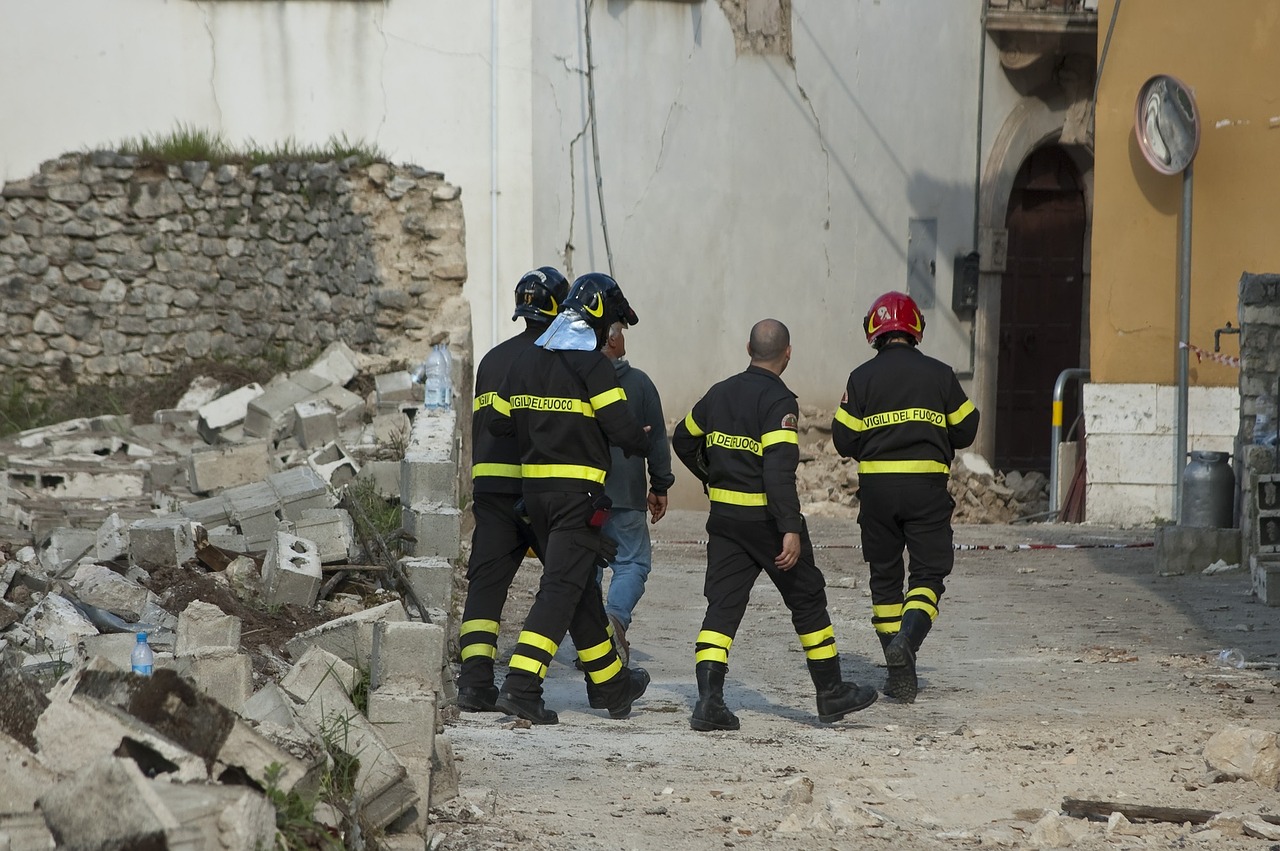
Choosing the Right Materials
When it comes to earthquake-proofing your home, the materials you choose can make a significant difference in your structure's resilience. Think of your home as a protective cocoon; the right materials will not only shield you from the shaking but also absorb some of the shock. It's essential to select materials that are both durable and flexible, as they can better withstand the forces of an earthquake.
One of the top choices for earthquake-resistant construction is reinforced concrete. This material combines the compressive strength of concrete with the tensile strength of steel, creating a robust structure that can flex without breaking. Additionally, steel framing is another excellent option, as it provides superior strength and flexibility compared to traditional wood framing. In fact, many modern buildings in earthquake-prone areas utilize steel frames to enhance stability.
Another material worth considering is shear walls. These walls are designed to resist lateral forces during an earthquake, adding an extra layer of support to your home. Incorporating shear walls made from reinforced concrete or plywood can significantly improve your home's ability to withstand seismic activity. Additionally, cross-bracing with steel rods can also help distribute forces more evenly throughout your structure.
Now, let's not forget about the roofing materials. Lightweight materials such as metal roofing or asphalt shingles can help reduce the overall weight of your home, minimizing the stress on your foundation during an earthquake. It's crucial to ensure that your roofing system is securely fastened to prevent it from being dislodged during seismic events.
To give you a clearer picture, here's a concise comparison of some commonly used materials:
| Material | Strength | Flexibility | Cost |
|---|---|---|---|
| Reinforced Concrete | High | Moderate | $$$ |
| Steel Framing | Very High | High | $$$$ |
| Shear Walls | High | Low | $$ |
| Lightweight Roofing | Moderate | High | $$ |
In conclusion, choosing the right materials is a critical step in ensuring your home is earthquake-resistant. By opting for reinforced concrete, steel framing, shear walls, and lightweight roofing, you can significantly enhance your home's ability to withstand seismic forces. Remember, investing in quality materials now can save you from costly repairs and potential hazards in the future.
Q: What is the best material for earthquake-resistant construction?
A: Reinforced concrete and steel framing are among the best materials due to their strength and flexibility.
Q: How can I tell if my home is earthquake-resistant?
A: Consult with a structural engineer to assess your home's design and materials for earthquake resilience.
Q: Are there specific building codes for earthquake-prone areas?
A: Yes, many regions have specific building codes that require certain standards for earthquake safety. Always check local regulations.

Retrofitting Older Homes
When it comes to making older homes more resilient against earthquakes, retrofitting is the name of the game. Many older houses were built before modern seismic codes were established, which means they can be particularly vulnerable when the ground starts shaking. But fear not! Retrofitting can significantly enhance the structural integrity of these homes, making them safer for you and your loved ones.
So, what exactly does retrofitting involve? Essentially, it’s about reinforcing the existing structure to better withstand seismic forces. This can include a variety of modifications, such as bolting the house to its foundation, adding shear walls, or installing steel braces. These upgrades can help prevent the home from swaying excessively or even collapsing during an earthquake. Imagine your house as a tree in a storm; with proper support, it can bend and sway without breaking.
One of the first steps in the retrofitting process is to conduct a thorough assessment of your home’s current condition. This involves checking the foundation, walls, and roof for any signs of weakness. You might want to hire a structural engineer to help identify specific vulnerabilities. Once you have a clear understanding of what needs to be done, you can move forward with the necessary upgrades.
Here are some common retrofitting techniques that can be applied to older homes:
- Bolting: This involves securing the house to its foundation with metal bolts, preventing it from sliding off during an earthquake.
- Shear Walls: Adding shear walls helps to resist lateral forces, providing additional strength to the structure.
- Steel Bracing: Installing steel braces can enhance the overall stability of the home, allowing it to better absorb shock.
Moreover, it’s essential to consider the materials used in the retrofitting process. Choosing the right materials can make a significant difference in how well your home performs during seismic activity. For instance, flexible materials that can absorb energy are often preferred because they allow the structure to move without sustaining damage.
Retrofitting isn’t just about safety; it can also increase the value of your home. In a market where buyers are increasingly aware of natural disaster risks, having a retrofitted home can make it more appealing. It’s like putting a safety net under a tightrope walker; it gives potential buyers peace of mind knowing that the house has been fortified against earthquakes.
In conclusion, retrofitting older homes is not just a precaution; it’s an investment in safety and future value. By taking the time to reinforce your home, you’re not only protecting your family but also ensuring that your property stands strong against the unpredictable forces of nature. If you own an older home, don’t wait for the next earthquake to take action—start planning your retrofitting project today!
Q: What is retrofitting?
A: Retrofitting is the process of adding new technology or features to older systems or structures to improve their performance, such as enhancing earthquake resistance in homes.
Q: How do I know if my home needs retrofitting?
A: If your home was built before modern seismic codes were established, it may be vulnerable. A structural engineer can conduct an assessment to identify specific needs.
Q: What are the benefits of retrofitting?
A: Retrofitting can enhance safety, increase property value, and provide peace of mind knowing your home is better prepared for seismic activity.
Q: Is retrofitting expensive?
A: The cost can vary depending on the size of the home and the extent of the retrofitting needed, but it is often seen as a worthwhile investment for safety and property value.

Emergency Preparedness Plans
When it comes to earthquakes, having a solid emergency preparedness plan can mean the difference between chaos and calm. Imagine this: the ground shakes beneath you, and everything you know is suddenly upended. In such moments, a well-thought-out plan can guide you and your loved ones to safety, ensuring that everyone knows what to do and where to go. So, how do you create an effective emergency plan? Let’s break it down.
First and foremost, it's essential to identify the specific risks associated with earthquakes in your area. Understanding the potential impact will help you tailor your emergency plan accordingly. For instance, if you live in a region prone to frequent seismic activity, your plan should be more detailed compared to someone in a less active zone. This awareness is the first step in safeguarding your family.
Next, consider establishing clear evacuation routes. These are the paths you and your family will use to exit your home quickly and safely. Think of it as creating a map that leads you to safety. Make sure to practice these routes regularly, so everyone knows exactly what to do when the ground starts shaking. It's also wise to identify safe spots within your home, such as under sturdy furniture, where you can take cover during an earthquake.
Communication is another critical element of your emergency plan. In the chaos following an earthquake, it’s easy to lose track of family members. To prevent this, create a family communication plan. This plan should outline how you will contact each other after the quake, where you will meet, and what information you need to share. For instance, you might designate a specific location outside your home, like a neighbor's yard or a nearby park, as your meeting point. This way, even if cell service is down, everyone knows where to go.
In addition to communication, it's crucial to prepare an emergency kit. This kit should include essential supplies that can sustain your family for at least 72 hours. Consider including the following items:
- Water (one gallon per person per day)
- Non-perishable food
- First aid supplies
- Flashlights and batteries
- Whistle to signal for help
- Multi-tool or Swiss Army knife
- Important documents (in a waterproof container)
Store your emergency kit in an easily accessible location, and ensure all family members know where it is. Regularly check and update the kit, especially food and water supplies, to keep everything fresh and ready for use.
Lastly, don’t forget to conduct regular drills. Just like fire drills in school, earthquake drills at home can help everyone practice their roles and make the plan second nature. It’s a great way to build confidence and ensure that when the time comes, everyone knows what to do.
Q: How often should I update my emergency plan?
A: It's recommended to review and update your emergency plan at least once a year or whenever there are significant changes in your family, such as a new member or moving to a new location.
Q: What should I do if I’m not home during an earthquake?
A: If you’re not home, try to stay calm and follow your family communication plan. Check in with family members as soon as possible to ensure everyone is safe.
Q: Are there specific items I should include in my emergency kit for children?
A: Yes! Include items like diapers, baby formula, medications, and comfort items such as toys or blankets to help soothe children during stressful times.

Creating a Family Communication Plan
When disaster strikes, having a well-thought-out family communication plan can be the difference between chaos and calm. Think of it as your family's roadmap during an earthquake; it guides everyone to safety and ensures that no one is left behind. The first step in crafting this essential plan is to establish a designated meeting place. This should be a location outside your home, like a neighbor's yard or a nearby park, where everyone can gather after shaking stops. Having a clear spot reduces confusion and anxiety, allowing your family to regroup and assess the situation.
Next, consider how you’ll communicate if you’re separated during the quake. In this digital age, it's easy to assume that everyone will have their phones handy, but power outages or network failures can happen. Therefore, it’s crucial to have a backup plan. Establish a contact person outside your immediate area, someone who can relay messages if local communication fails. This person should be aware of your family’s situation and be willing to help coordinate communication.
Another key element is to assign roles to each family member. For instance, one person might be responsible for gathering emergency supplies, while another checks on neighbors. This division of labor not only speeds up the response time but also ensures everyone knows their responsibilities. You can even create a simple chart that outlines these roles and keep it in a visible place, like on the fridge.
Don’t forget to practice your communication plan! Regularly running through the plan helps everyone remember their roles and the meeting location. It’s like rehearsing for a play; the more you practice, the more confident you’ll feel when the curtain rises on the real performance. You can even turn it into a fun family activity, making it a bonding experience while preparing for the unexpected.
Lastly, ensure that everyone has access to a copy of the communication plan. This can be a physical document or a digital version stored on phones or cloud services. The key is that everyone knows where to find it when they need it. Remember, a well-prepared family is a resilient family, ready to face whatever comes their way!
- What should be included in a family communication plan?
Your plan should include a designated meeting spot, emergency contact information, assigned roles, and a copy of the plan accessible to all family members.
- How often should we practice our communication plan?
It’s recommended to practice at least twice a year to ensure everyone remembers their roles and the meeting location.
- What if we can't reach our emergency contact?
Choose a few backup contacts in different locations to increase the chances of reaching someone if your primary contact is unavailable.
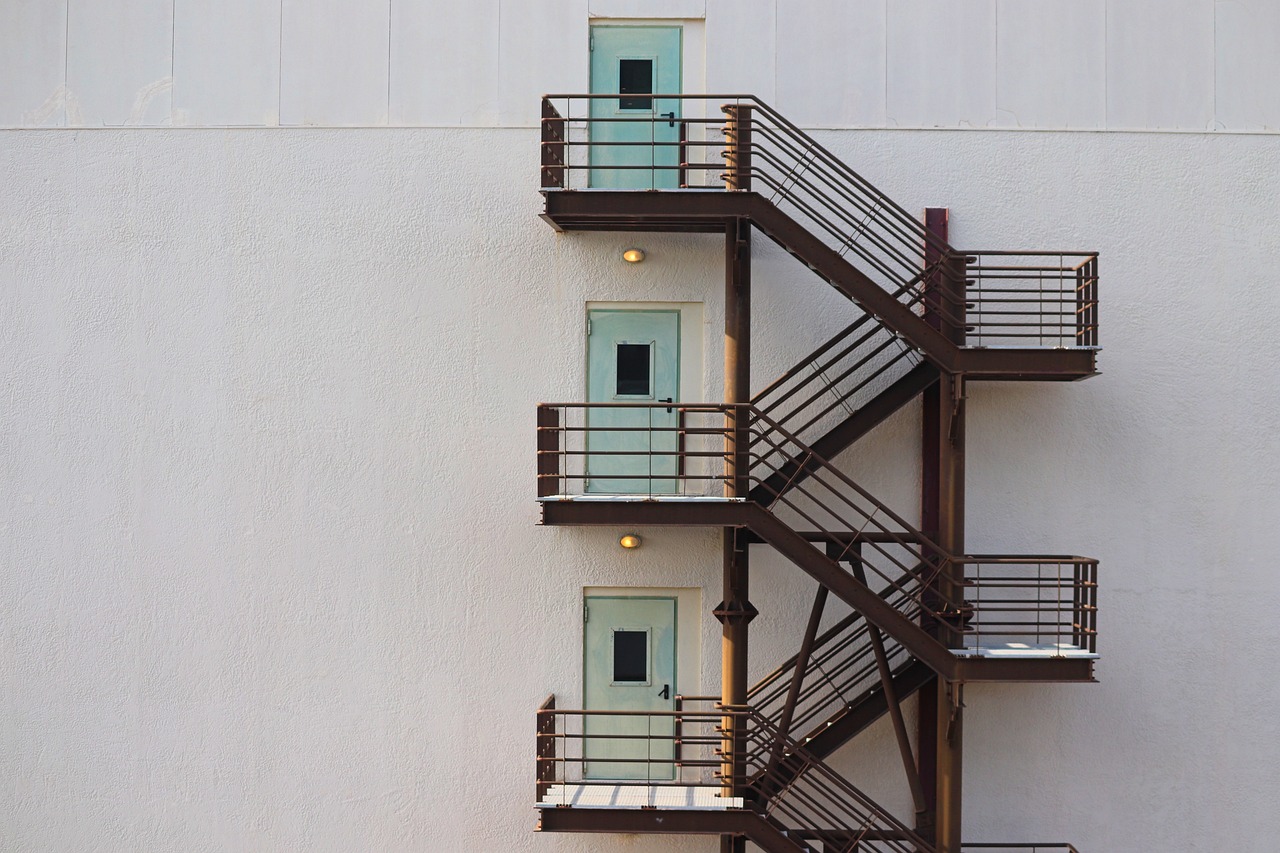
Emergency Kits and Supplies
When the ground shakes and the world feels like it's spinning, having an emergency kit ready can be your lifeline. Think of it as your personal safety net, ensuring that you and your loved ones are prepared for the unexpected. But what exactly should you include in your emergency kit? It’s not just about throwing a few items into a backpack; it’s about being strategic and thoughtful. A well-prepared kit can make a significant difference in how you cope with the aftermath of an earthquake.
First and foremost, your emergency kit should contain essential supplies that can sustain you and your family for at least 72 hours. This includes food and water, which are the cornerstones of any survival kit. Aim for non-perishable food items that are easy to prepare, like canned goods, energy bars, and dried fruits. When it comes to water, store at least one gallon per person per day. Don’t forget to rotate your supplies every six months to keep everything fresh!
In addition to food and water, consider including the following items in your kit:
- First Aid Supplies: A comprehensive first aid kit is crucial. Include bandages, antiseptic wipes, scissors, and any necessary medications.
- Flashlights and Batteries: Power outages are common after an earthquake. Pack a flashlight and extra batteries to light your way.
- Multi-tool or Swiss Army Knife: This versatile tool can come in handy for various tasks, from opening cans to making repairs.
- Whistle: In case you need to signal for help, a whistle can be a lifesaver.
- Blankets or Sleeping Bags: Keep warm and comfortable with blankets or sleeping bags, especially if you need to evacuate.
Don’t overlook the importance of personal documents as well. Store copies of essential documents like insurance policies, identification, and medical records in a waterproof container. This will ensure you have access to crucial information when you need it most. Additionally, consider including some cash, as ATMs and credit card machines may not be operational after a disaster.
Lastly, tailor your emergency kit to meet the specific needs of your family. If you have pets, don’t forget to include supplies for them as well, such as food, water, and any medications they may need. Each family member may have unique requirements, so take the time to personalize your kit accordingly.
In summary, an emergency kit is not just a collection of random items; it’s a carefully curated set of supplies designed to keep you safe and secure in the face of disaster. By taking the time to prepare your kit, you’re not just preparing for an earthquake—you’re investing in your peace of mind.
Q: How often should I check my emergency kit?
A: It’s a good idea to check your emergency kit every six months. This ensures that food and water supplies are fresh and that any necessary medications are up to date.
Q: Can I include my pets in my emergency plan?
A: Absolutely! Make sure to include food, water, and any medications your pets may need in your emergency kit.
Q: What should I do if I have special medical needs?
A: If you or a family member has special medical needs, ensure that your emergency kit includes any necessary medications, medical supplies, and a list of medical conditions and allergies.
Q: Where is the best place to store my emergency kit?
A: Store your emergency kit in a cool, dry place that is easily accessible. Make sure all family members know where it is located.
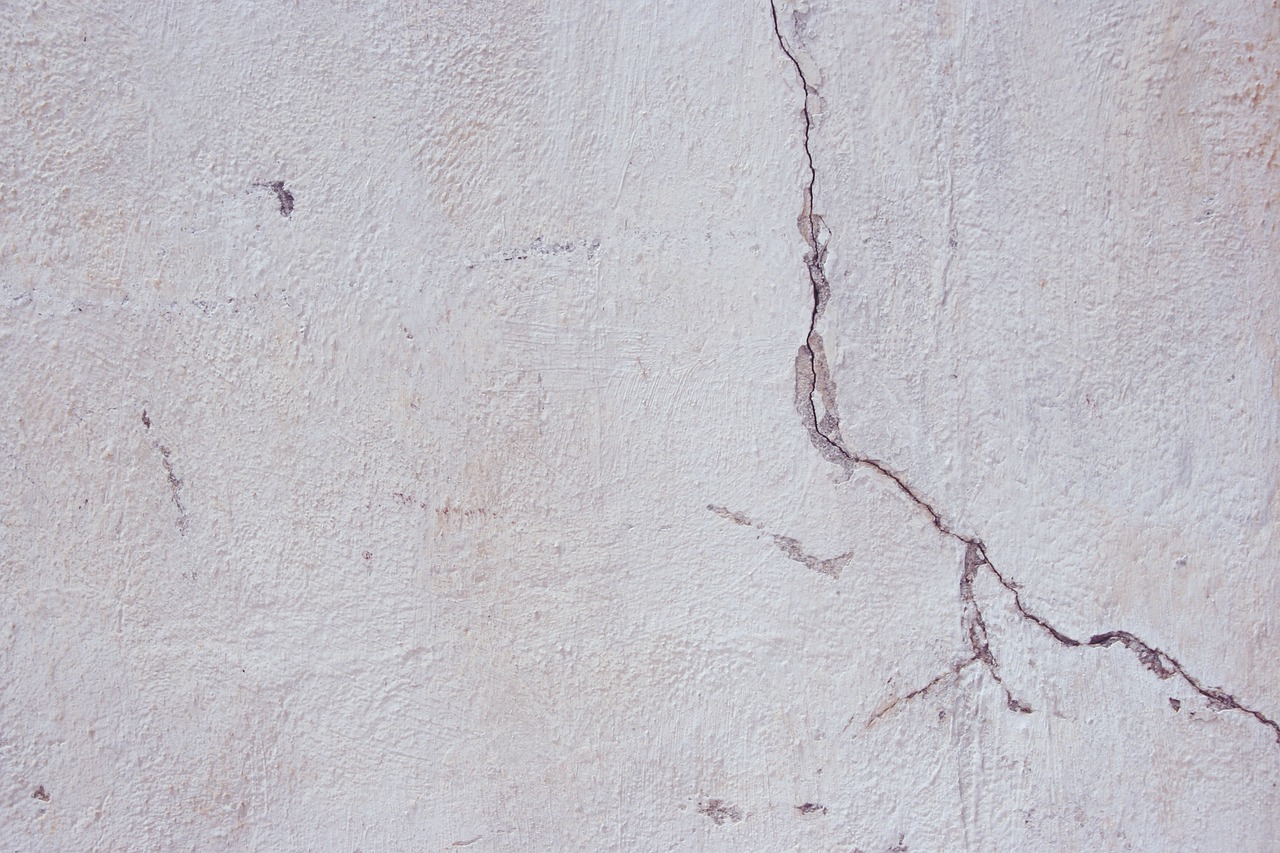
Insurance and Financial Considerations
When it comes to earthquake preparedness, understanding insurance options is crucial. Earthquakes can strike without warning, leaving a trail of destruction in their wake. This is why having the right insurance coverage is not just a good idea; it’s essential for safeguarding your home and financial future. But what types of insurance should you consider? And how do you know if your current policy is sufficient? These are the questions that every homeowner should ask themselves.
First off, it's important to recognize that standard homeowners' insurance policies typically do not cover earthquake damage. This means that if you live in a seismically active area, you might need to purchase a separate earthquake insurance policy. This can be a bit of a shock, especially if you thought your regular policy had you covered. So, what does earthquake insurance generally include? It usually covers the cost of repairs to your home and personal belongings damaged during an earthquake, as well as additional living expenses if you need to temporarily relocate.
Next, let’s delve into evaluating your current insurance policies. You might want to consider the following factors:
- Coverage Limits: Ensure that your policy covers the full value of your home and possessions. Underestimating this can lead to significant out-of-pocket expenses after an earthquake.
- Deductibles: Earthquake insurance often comes with higher deductibles than standard policies. Make sure you understand how much you'll need to pay out-of-pocket before your coverage kicks in.
- Additional Coverage: Depending on your needs, you may want to consider additional coverage options, such as for personal property or loss of use.
Now, let’s talk about financial planning for repairs. After an earthquake, the last thing you want to worry about is how you're going to afford the necessary repairs. Start by creating a budget that includes potential repair costs. You can do this by researching the average costs of repairs in your area and factoring in the worst-case scenario. Having a financial cushion can help alleviate the stress of unexpected expenses.
Additionally, consider setting up a dedicated savings account for emergency repairs. Even small contributions can add up over time, providing you with peace of mind. This proactive approach not only prepares you for the worst but also helps you feel more in control of your financial situation.
In summary, understanding and planning for insurance and financial considerations is a crucial part of earthquake preparedness. It’s not just about having a policy; it’s about ensuring that policy meets your needs and that you are financially ready to tackle any challenges that come your way. Remember, the goal is to protect your home and your family, so take the time to evaluate your options and make informed decisions.
1. Do I need earthquake insurance if I live in a low-risk area?
While the risk may be low, it's worth considering that earthquakes can occur unexpectedly. Evaluate your risk and decide if the peace of mind is worth the investment.
2. How much does earthquake insurance typically cost?
Costs can vary widely based on location, home value, and coverage limits. On average, homeowners can expect to pay between 10% to 20% of their home’s value for coverage.
3. Can I add earthquake coverage to my existing homeowners' policy?
In many cases, yes! Some insurance companies offer endorsements or riders for earthquake coverage. Check with your insurer for options.
4. What should I do if my insurance claim is denied?
First, review your policy to understand the reasons for denial. If you believe the claim was unjustly denied, consider appealing the decision or consulting a legal expert for advice.
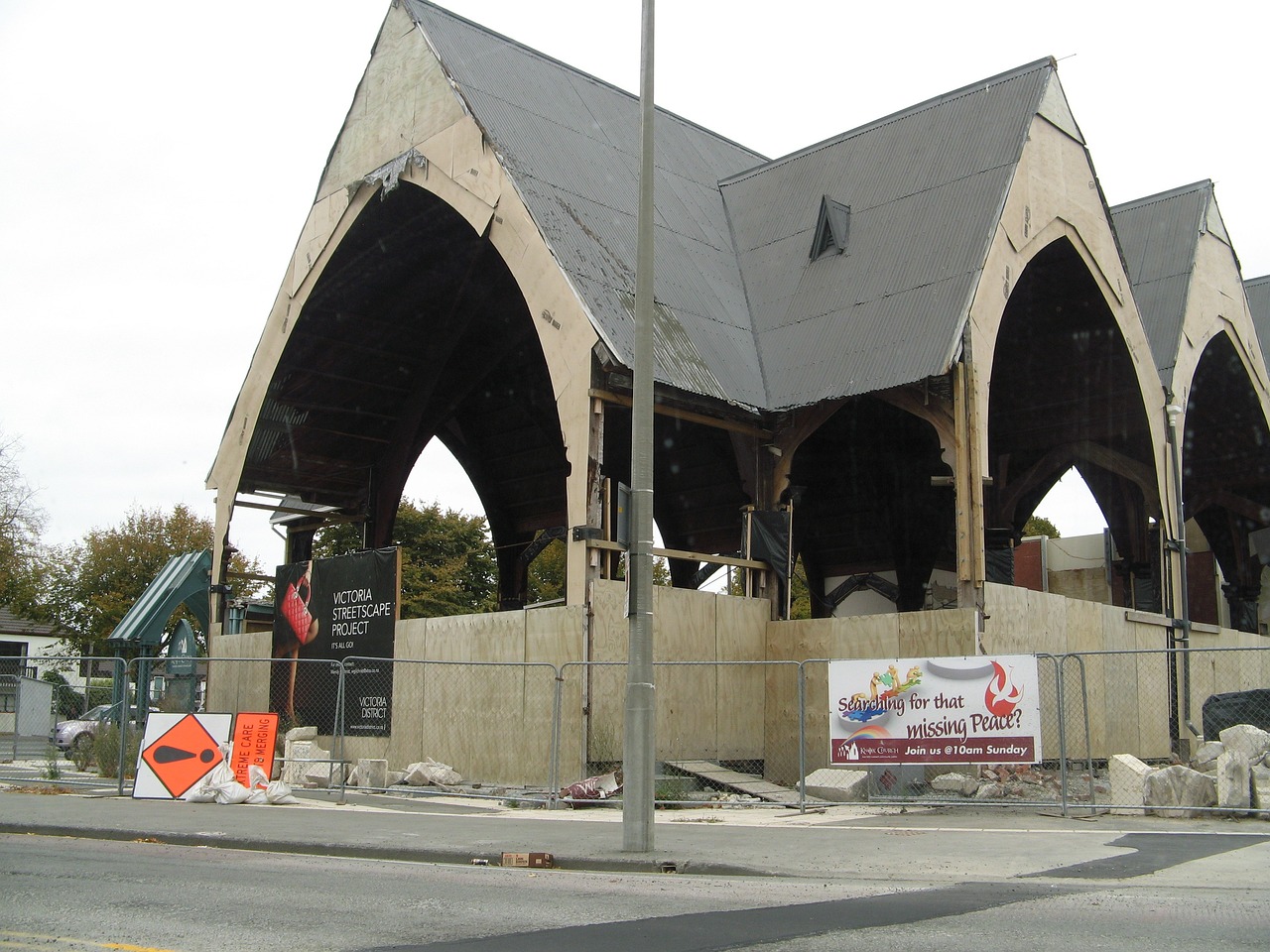
Evaluating Insurance Policies
When it comes to safeguarding your home against the unpredictable nature of earthquakes, understanding your insurance policy is absolutely crucial. Not all insurance policies are created equal, especially when it comes to covering the damages caused by seismic activity. First, you should take a close look at your current homeowner's insurance policy. Does it explicitly mention coverage for earthquake damage? If not, you might be left in a precarious situation when the ground starts shaking.
It's essential to understand the different types of earthquake coverage available. Typically, there are two main options: earthquake endorsements and standalone earthquake policies. An endorsement is an addition to your existing policy that provides coverage specifically for earthquake-related damages. On the other hand, a standalone policy is a separate insurance contract that exclusively covers earthquake damage. Depending on your location and the level of risk, one option may be more beneficial than the other.
To help you evaluate your insurance policies effectively, consider the following factors:
- Deductibles: Earthquake insurance often comes with high deductibles, usually ranging from 10% to 20% of your home's value. Make sure you're comfortable with the amount you would need to pay out-of-pocket before coverage kicks in.
- Coverage Limits: Check the maximum payout your policy offers. In some cases, the coverage limit may not fully cover the cost of repairs or rebuilding your home.
- Exclusions: Be aware of what is not covered. Some policies might exclude certain types of damage, such as damage to landscaping or unattached structures.
After you’ve gathered all this information, it may be beneficial to create a comparison table to weigh the pros and cons of each policy. Here's a simple example of what that might look like:
| Policy Type | Coverage Type | Deductible | Coverage Limit | Exclusions |
|---|---|---|---|---|
| Homeowner's Insurance with Endorsement | Includes earthquake damage | 10% | $300,000 | Landscaping damage |
| Standalone Earthquake Policy | Only earthquake damage | 20% | $500,000 | Unattached structures |
In addition to evaluating the specifics of your policies, it’s advisable to consult with an insurance agent who specializes in earthquake coverage. They can provide valuable insights tailored to your unique situation and help you navigate the complexities of your options. Remember, the goal is to ensure that your home is adequately protected, giving you peace of mind when the ground shakes beneath your feet.
In conclusion, evaluating your insurance policy is not just about ticking boxes; it's about ensuring that you have a solid safety net in place. As you assess your options, consider your personal circumstances, the risks associated with your location, and the potential costs of repairs. Being proactive now can save you a lot of stress and financial burden later on.
Q: Do I need earthquake insurance if I live in a low-risk area?
A: While it may not seem necessary, even low-risk areas can experience unexpected seismic activity. It's wise to assess your personal comfort level and financial situation before making a decision.
Q: How can I lower my earthquake insurance premiums?
A: You can often lower your premiums by reinforcing your home, using flexible building materials, or bundling your policies with the same insurer.
Q: What should I do if I experience an earthquake?
A: Ensure your safety first. After ensuring you and your family are safe, assess your home for damages and contact your insurance provider to report any issues.

Financial Planning for Repairs
When the ground shakes and your home bears the brunt of an earthquake, financial planning for repairs becomes not just a necessity, but a lifeline. Imagine waking up to find your living room turned into a jigsaw puzzle of fallen furniture and cracked walls. The reality is that after an earthquake, the last thing you want is to be scrambling for funds to fix the damage. So, how can you prepare for these unexpected expenses? First, it's essential to create a budget that includes potential repair costs. This budget should account for both minor fixes, like painting and cleaning, and major repairs, such as structural reinforcements or roof replacements.
To give you a clearer picture, here's a simple breakdown of potential expenses you might face after an earthquake:
| Type of Repair | Estimated Cost |
|---|---|
| Minor Repairs (e.g., drywall, painting) | $500 - $2,000 |
| Structural Repairs (e.g., foundation, walls) | $5,000 - $15,000 |
| Roof Repairs | $3,000 - $10,000 |
| Electrical/Plumbing Repairs | $1,000 - $5,000 |
| Complete Home Renovation | $20,000+ |
By understanding these potential costs, you can start setting aside a dedicated emergency fund specifically for home repairs. Aim to save at least 10-15% of the estimated repair costs annually. This way, when disaster strikes, you won’t be blindsided by the financial burden. Additionally, consider speaking with a financial advisor to help you create a robust financial plan that includes insurance premiums, savings for repairs, and even potential temporary housing costs if your home becomes uninhabitable.
Moreover, keep in mind that not all repairs can be anticipated. Earthquakes can cause hidden damages that may not be immediately visible. Therefore, it’s wise to allocate a portion of your repair fund for unexpected repairs. This can be a lifesaver when the unexpected happens, as it often does in the aftermath of seismic activity.
In conclusion, while we can’t predict when an earthquake will strike, we can prepare ourselves financially. By budgeting for repairs, saving diligently, and being aware of potential costs, you can ensure that your home remains a safe haven, even in the face of nature’s fury.
- What are the first steps I should take after an earthquake? Assess the damage, ensure your safety, and contact your insurance provider.
- How can I estimate the cost of repairs? Consult with contractors or home repair experts to get quotes based on the damage.
- Is earthquake insurance necessary? If you live in an earthquake-prone area, it is highly recommended to protect your investment.
- What should I include in my emergency fund for repairs? Aim to cover at least 10-15% of potential repair costs, plus a buffer for unexpected expenses.
Frequently Asked Questions
- What are the main risks of earthquakes to my home?
Earthquakes can cause significant damage to homes through ground shaking, ground rupture, and secondary effects like landslides and tsunamis. The severity of these risks largely depends on your location, soil type, and the construction quality of your home. Understanding these risks is crucial in planning your earthquake preparedness strategy.
- How can I reinforce my home's structure against earthquakes?
Reinforcing your home involves several techniques such as bolting your house to its foundation, adding braces to walls, and retrofitting older structures. These modifications help ensure that your home can withstand seismic forces and minimize damage during an earthquake.
- What should I consider when upgrading my foundation?
When upgrading your foundation, consider methods like underpinning, which strengthens the existing foundation, and installing steel reinforcements for added support. It's essential to assess the soil conditions as well, since they significantly affect your home's stability during seismic events.
- Which materials are best for earthquake-resistant construction?
Materials that are flexible and durable, such as reinforced concrete, steel, and engineered wood, are ideal for earthquake-resistant construction. These materials can absorb and dissipate the energy generated by seismic activity, helping to protect your home from damage.
- How can I create an effective emergency preparedness plan?
An effective emergency preparedness plan includes identifying evacuation routes, establishing a family communication plan, and preparing emergency kits. Make sure everyone in your household knows their role and where to meet after an earthquake to ensure safety and coordination.
- What should I include in my emergency kit?
Your emergency kit should contain essential supplies such as water, non-perishable food, a flashlight, batteries, a first aid kit, and any necessary medications. It's also wise to include important documents and cash in case of emergencies.
- Do standard home insurance policies cover earthquake damage?
No, most standard home insurance policies do not cover earthquake damage. It's important to review your current policy and consider purchasing additional earthquake coverage to protect your home and belongings from potential seismic damage.
- How can I financially prepare for earthquake repairs?
To financially prepare for potential earthquake repairs, create a budget that includes emergency savings specifically for home repairs. Research the costs associated with common repairs and consider setting aside funds regularly to ensure you are prepared for any unexpected expenses.
















